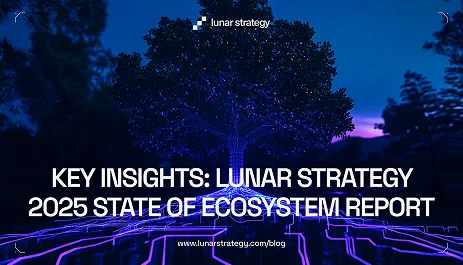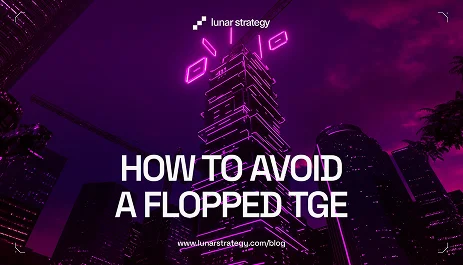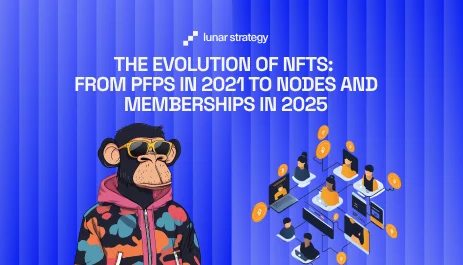Why Do SaaS Firms Need an SEO Strategy?
Let's start with a brief primer on search engine optimization. Everything you do to boost your brand's ranking on search engine results is SEO (SERPs). The goal is to rank your landing pages, blog posts, and goods as high as possible on those sites. After all, the higher your ranking in the search results, the more visitors you will receive.
A large number of variables determines the ranking of each page. Google, the world's most popular search engine, ranks online content using an AI-enhanced algorithm. The system takes into consideration several ranking variables, including:
User engagement
How visitors engage with your website's pages. Do they intend to remain for an extended period or only for a short time? What percentage of their time do they spend clicking on or engaging with your content? How frequently are your pages visited?
Link profile
The link structure to or from your content. Which websites and domains do you have pointing to you? What are the destinations of your external links? What's the best way to manage internal links?
Content
What is the topic of your onsite material, and how valuable is it? What are the most common keywords in your online content? How effectively do articles or blog entries respond to the reader's intent?
Check out Digital Strategy Agencies
Domain authority
Is the information relevant to your particular industry? Expertise, Authoritativeness, & Trustworthiness are now more critical than ever in Google's evaluation of your company. Is there a detailed about page on your website? Have you given easy-to-find contact pages, references, and external connections to sources for site visitors? Is there an author byline on every piece on your blog?
That is simply the beginning of the list of ranking variables.
All of these criteria, and more, are taken into account by a well-crafted SaaS SEO strategy.
It's not an easy process; it requires much time, effort, & money.
When done correctly, though, the work is well worth it for several reasons.
Learn how Lunar Strategy took a website from 1-2 weekly leads to 4-8 weekly organic leads here.
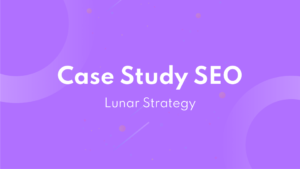
The growth is predictable and scalable.
SEO, like a large number of other acquisition methods, is challenging to master. Several factors go into making it work for your brand
However, unlike pay-per-click (PPC) advertising but also incentive marketing, it is typically predictable.
The number of organic traffic a site receives will vary. There are no two pages or postings alike. Search traffic trends and patterns, on the other hand, are pretty predictable. Therefore, you can predict the outcomes of your SEO efforts if you have good analytics and expertise on your side.
For example, predicting the increase in traffic from shifting from the second to the first results page for a search phrase is quite simple. This makes calculating ROI and budgeting for a long-term SEO plan much more accessible.
Furthermore, increasing traffic through SEO might yield exponential returns. The influence grows as you improve and enhance your efforts. Everything you accomplish builds on the previous steps you've done. That implies the impact of each improvement is more significant than if it were the sole step you took.
As a result, a SaaS SEO approach will not yield immediate results. What it will do, then, is set you up for success in the long run. You'll be able to generate more and more focused organic traffic. You may then create more leads and sales from that type of traffic.
Standing out
Did you know that the value of SaaS companies has been rising since last year? You do not have to take my word for it; look at the graph below to see for yourself
SaaS is only going to become more valuable. That indicates it's a profitable industry, which means A: it's an excellent industry to go into, and B: it'll be fiercely competitive.
So, how can you differentiate yourself from competing SaaS platforms?
The solution is less complicated than it appears. Even the most acceptable content strategy won't make your software seem more enticing than your rivals' unless those rivals are on Google's second page of results. In other words, the key is to implement a comprehensive SEO strategy.
The popularity of SEO is growing, which means that the amount of searches for the target keywords is increasing. Your company may get in on these organic searches by enlisting the aid of an SEO agency to improve your content.
SEO is about more than cramming keywords into your content. It entails combining compelling content, practical site layout, keyword research, link development, and data analytics to create an optimal online presence for your company. In such a competitive market, only a mix of all these will make you step out.
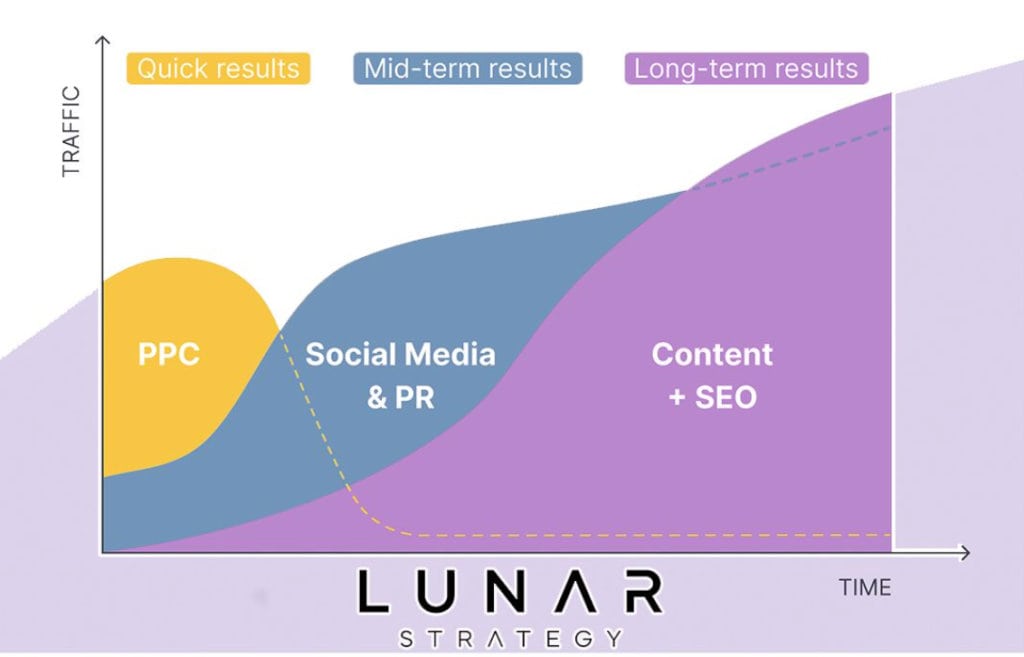
Aiding and abetting other channels.
So far, we've discussed the benefits of a strong SEO strategy. That isn't to suggest that you shouldn't pursue alternative methods of acquisition. However, to identify, qualify, nurture, & convert leads, you'll need a comprehensive strategy. The advantage of an SEO campaign is that it can serve as the foundation for such a strategy.
Increasing organic traffic helps and feeds into your other acquisition & marketing activities. More site visitors equals more opportunities to collect email addresses. Your email marketing results will improve as a result of this.
High-quality content that you create as part of the SEO efforts may also serve many purposes. For example, your digital marketing team may share a fantastic blog article with your followers on social media. Meanwhile, a well-optimized product page will help with both conversion rate optimization (CRO) and SEO.
To put it another way, a good SEO plan aids in the optimization of your whole SaaS website, transforming everything your business produces into high-quality content that can be used in a content marketing campaign.
Improving connections with customers.
All software firms strive to make the customer experience seamless, whether startups, small companies, or giant corporations. This includes SaaS businesses.
You'll optimize all of your content while optimizing your website for SaaS. This includes, among other things, making your material more accessible and informative. When that happens, any target audience will have easier access to the information they need to get the most out of your product.
In effect, your SaaS website becomes its own marketing channel. That means you will be able to broaden your outreach and get more prospects while also boosting your SEO stats.
Cost-effectiveness in the long run
If you're still not persuaded about the benefits of SEO for SaaS, it might be because of the expense. You could be thinking that increasing organic traffic necessitates a significant expenditure. It does, but it is well worth the effort.
Your ROI will also improve over time as a result of the compound above the effect of SEO. Your initial SEO efforts will take time to bear fruit. It takes more than one exceptional piece of content to persuade Google. However, the cost of increasing traffic lowers with every step you take.
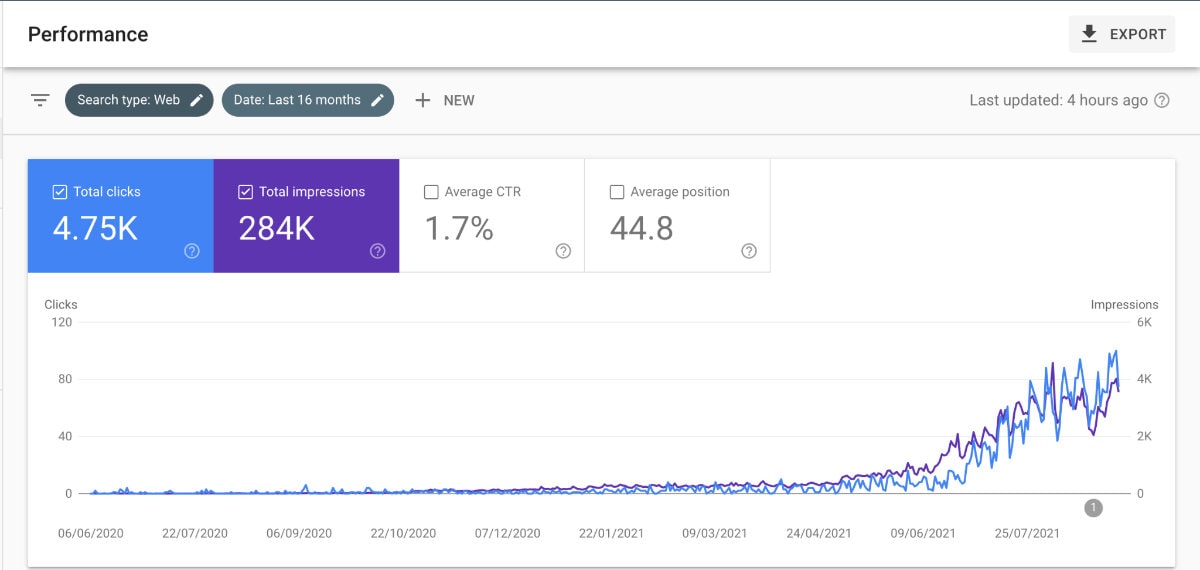
Types of Google Searches
We're all familiar with the process of conducting a Google search. It's so commonplace that it's simple to forget about it. You won't fall into that trap if you're already engaged in SEO, because organic searches are crucial to your approach. However, you may become so engrossed in your searches that you lose sight of the searchers.
Every search query has a natural person behind it, and you must never forget that. It's critical to consider search volume, keywords, especially click-through rates. It's also essential to analyze and comprehend why someone searches the way they do. That's what we're talking about when we say "search intent."
Anyone who enters a term into Google needs assistance. They're counting on the search engine to accomplish a task for them. As we'll see in a minute, what they require varies. That it's important for you to recognize that their search purpose hasn't changed.
The importance of search intent can be attributed to Google. The search engine is committed to providing the most relevant results. As a result, Google's algorithms can and often do identify search intent. Search engine results pages (SERPs) only show what users want - and need - to see.
This must be considered in your content marketing approach. This entails customizing pages and text to the needs of individuals looking for relevant keywords. The 1st step is to understand the four different forms of search intent:
Informational searches
We use Google to look for information on occasion. We're seeking information that we don't have right now. This might be a simple question like, "What is VoIP?"
It may also become a lot more complicated. For example, someone who is looking for long-tail keywords such as "Is VoIP cost-effective for startups?" is looking for additional information. However, the information they want remains the same. They're looking for how-to manuals or instructional sites. That is why, as seen above, such items rank first on page one.
Navigational searches
When you search, you may know precisely where they want to go. However, it's possible that you don't have the correct homepage URL. Maybe it's quicker to tap out a quick internet search than to type it into the address box.
You might type something like "RingCentral VoIP Services" into the search box in such an instance. It will lead you to the manufacturer's website you want faster than inputting the full address.
Transactional searches
The internet is a large marketplace, among other things. As a result, many Google users want to purchase something. Furthermore, some of these are already on their way to making a purchase.
They'll do transactional searches at that time. They're seeking pages where they can buy what they desire by clicking through. Someone looking for a 'Buy VoIP Phone' isn't looking for a tutorial on the advantages of VoIP. They've already been sold, so if your brand page SEO assists you rank for these sorts of searches, your products will as well.
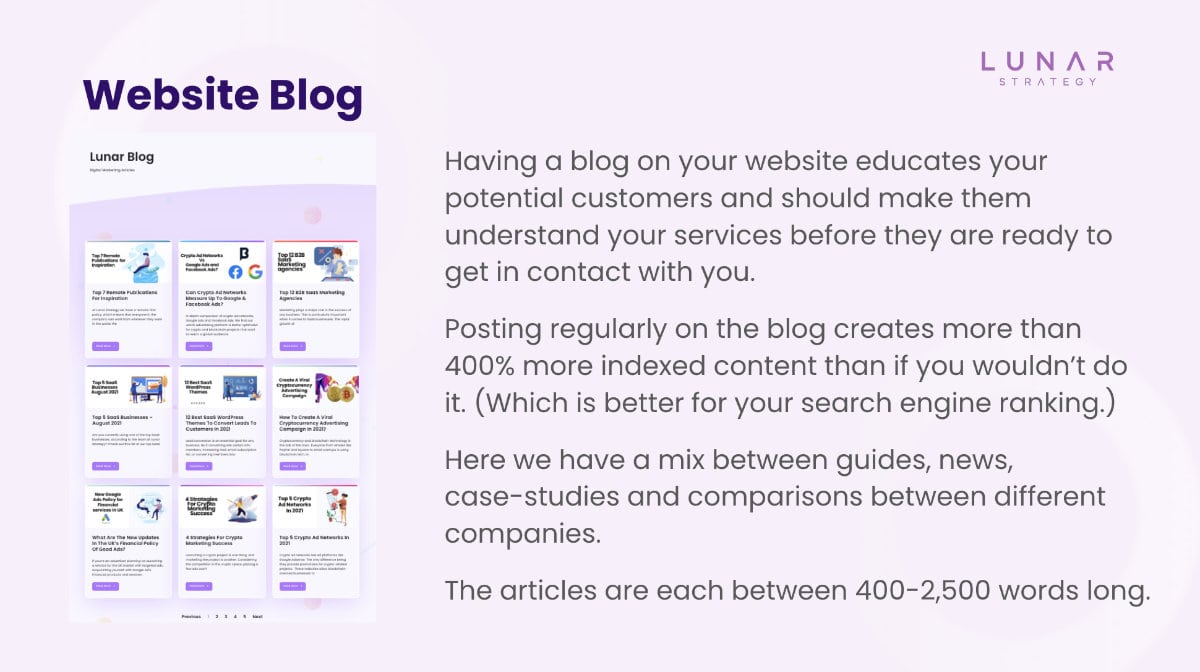
Investigational searches
Informational and transactional searches are combined in investigational searches. They're carried out by people who recognize they desire a product but aren't sure where to obtain it.
Searches for 'Vs.' are the most prevalent. To compare the two businesses, searchers enter something such as 'RingCentral vs. Vonage.' It's part of their investigative work on two comparable solution suppliers. Marketers must take advantage of this by ensuring that their SaaS website demonstrates why they are the best option.
Two things should have come out of our search intent for a whirlwind trip. The first is that not everyone uses Google for the same purpose. The other is that, depending on the search intent, the type of information that ranks changes.
Even though each search phrase is roughly linked to the same issue, this is the case (VoIP). As a result, understanding search intent, as well as the search words employed, is crucial.

The Connection Between SEO and the Marketing Funnel
It's all well and good to learn about search intent, but what does this have to do with SaaS SEO? That is an excellent question. When you examine the first stage in developing your SaaS SEO strategy, the answer becomes clear. It isn't, as you would suspect, keyword research. Instead, it focuses attention on your consumers.
Read more: Top SaaS Marketing Strategies to Grow Fast in 2021
A marketing funnel is a notion that you're probably acquainted with.
One of a SaaS company's main goals is to attract customers into - and down - its funnel. Clients who reach the 'Retention' section are earning money for the firm. As a result, you want to maintain your clients for as long as humanly possible.
The 'Retention' component is less important when it comes to SaaS SEO. It's also good to rethink the remainder of the funnel. Consider it more like a solid funnel with a single entrance at the top. Consider a colander that has been flipped upside down. Every marketing channel has entry points that allow customers to enter from top to bottom.
You're probably starting to understand how this ties in with what we discussed before regarding search intent. After all, the various types of search intent fall into the multiple portions of this SaaS SEO funnel.
An information seeker is seeking answers to a specific problem. When doing an investigative search, particular items are compared. For example, they may consult comparison tools, listen to podcast evaluations, or inquire about free trials.
Things are starting to fall into place. However, let us not fall into the trap of becoming too impersonal. We must never forget who is doing the searches.
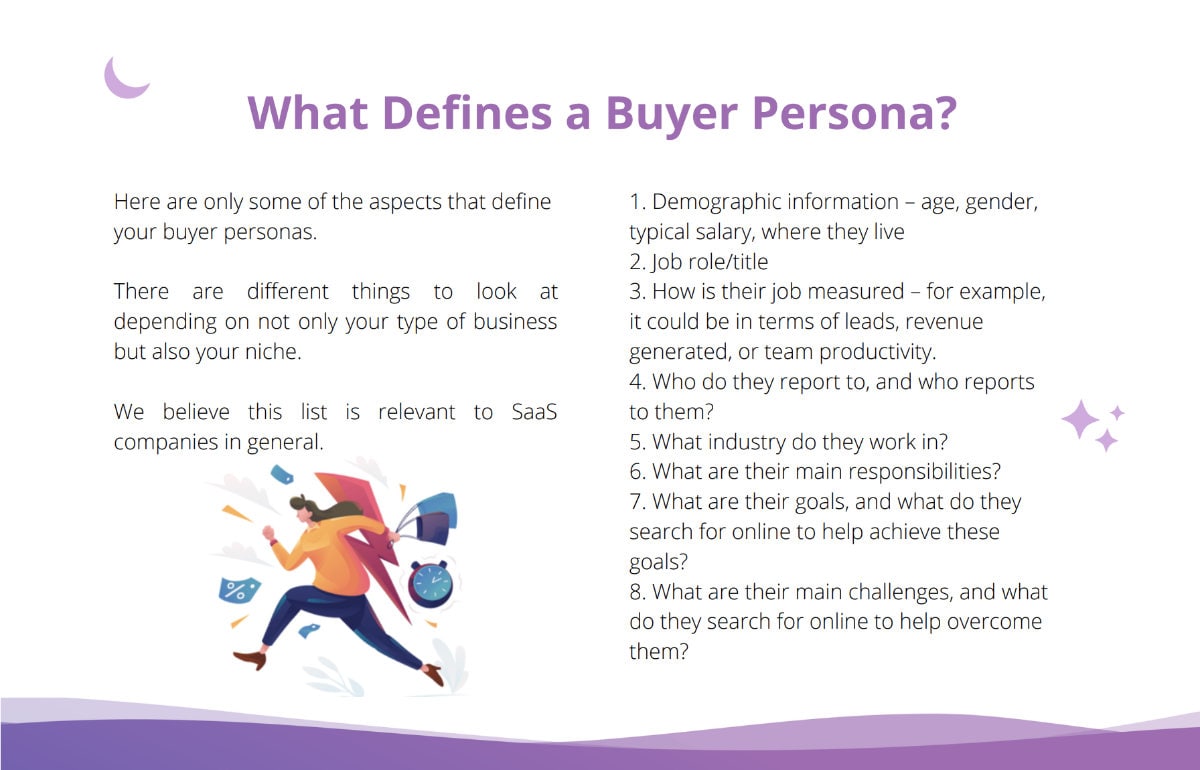
Identifying the appropriate buyer persona.
Don't begin the SEO approach by asking, "What search phrases must we rank for?" Instead, consider the question, "Who are our prospective customers?" Then you may think about what they could be looking for and why. This is how you may keep your search intent at the forefront of your thoughts at all times.
Creating buyer personas is a tried & tested method of better understanding your target audience. These are made-up characters who represent your usual clients. They define the traits that individuals who are interested in your items are likely to have in common.
You'll probably need to have more than one if you're running a SaaS business. After all, your various items or bundles will appeal to multiple consumers. As much as possible, try to fill out your personality. You may find valuable information in a few different ways:
Interviews with members of the staff
Please inquire with your staff about what they understand or have observed about your current consumers.
Customer satisfaction surveys
Get information directly from the source. Inquire with current clients whether they'd be willing to share some information with you.
Data
You'll already have a lot of data in your numerous solutions and platforms. For example, you may look up customer demographics in your CRM software. Meanwhile, Google Analytics may provide a wealth of information. It will disclose a lot about how your website's potential consumers engage with it.
It's simpler to step into the shoes of potential consumers when you use buyer personas. You'll have a better understanding of their pain areas and the issues that need to be addressed. As a consequence, you'll be aware of the data they demand.
Now it's time to integrate your target audience data with the SaaS SEO funnel. This enables you to chart and comprehend the path consumers may follow to purchase your items.
Being aware of the buyer's path.
Water is a lot more predictable than people. That's why a funnel isn't the best metaphor for describing their actions. It's also why you should try to map buyer experiences before aligning your marketing funnel with them. You don't want to use a template and presume that every consumer follows the same path.
Some leads will come in at the top of your funnel, at the 'Awareness' stage of their journey. These are the people who are most likely to search for information. They're conscious of a problem or difficulty and want to figure out how to solve it.
Others, on the other hand, may come upon your brand later in their trip. They could have learned about VoIP, for example, via a LinkedIn connection or a face-to-face chat with a colleague. They may come across your company when doing further research - when doing investigative searches.
Finally, some potential consumers may choose to enter your funnel at the very bottom. They've already accomplished a large portion of their trip and are familiar with the product they'll need to address their problem. All they want is to find the proper service provider.
You can figure out which of the categories, as mentioned above, most all of your leads might fall into by analyzing your buyer personas. Alternatively, you could discover that you can expect a very even split. In any case, you'll know how much weight to give SEO efforts at each point of the funnel.
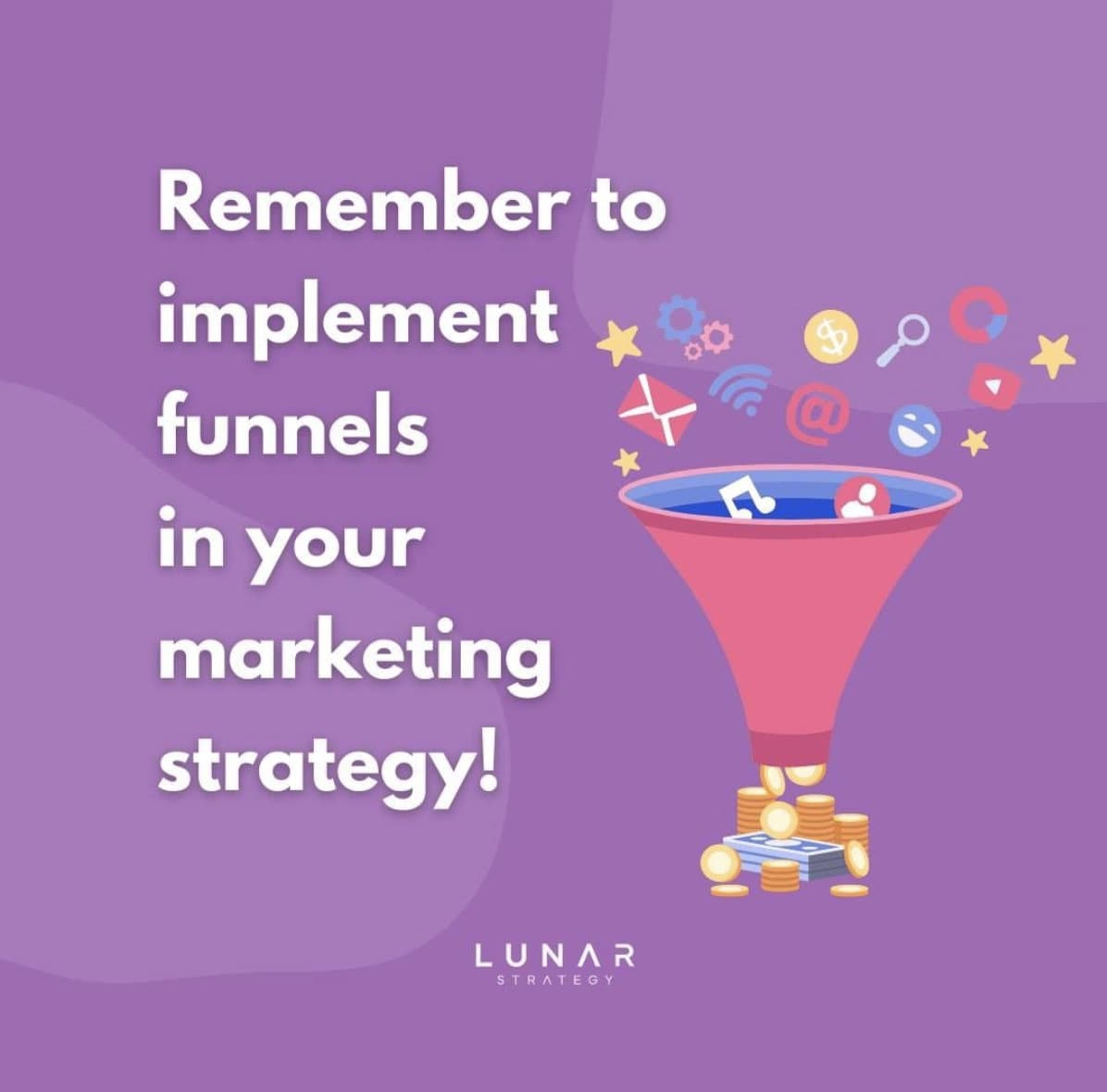
Top of the Funnel SEO
All SaaS sites will not use Pre-funnel SEO. A solid plan, on the other hand, will always include top-of-funnel SEO. This is the effort you put forth to attract visitors to your website at the start of the buyer's journey. Remember, this is the traffic that will enter your funnel through the usual top-down method.
People that enter your funnel at the top are aware of an issue or difficulty they are facing. They claim that they are overpaying for their corporate communication solutions. They'll resort to Google if they don't know how to fix their problem. They could look for anything along the lines of:
- 'How to acquire corporate communications at a lower cost.'
- 'How can I reduce my business communication expenses?'
- 'How can I acquire better communication options for my small company at a lower cost?'
They're attempting to figure out whether there are any answers to the agony they're experiencing. As a SaaS company, you have the potential to generate content that addresses their search intent. If you know what potential information consumers want, you can adapt your content to meet their needs. For example, you might make pages or articles that focus on:
- A UCaaS solution can help you save money on your communications costs.
- Small firms may save money by using unified communications systems.
- To save money, replace numerous suppliers with a single UC expert.
Those are simplistic instances, but they illustrate the point. In a minute, we'll go through how to use keyword research to develop top-of-the-funnel content in greater depth. Let's start by defining what you want this part of your SEO strategy to accomplish.
Middle of the Funnel SEO
The funnel's middle SEO is essential for SaaS as well as other B2B businesses. In the niche, buyer journeys are frequently more extended than in the B2C sector. You're more than likely to go online, select a book, miniskirt, or video game you like, and purchase everything in one sitting. However, if you're looking for a communication medium for your small business, you'll need to do a lot more study.
Your material for the middle of the funnel is aimed at leads who are still considering their options. Your target audience is now aware of their problem as well as the various solutions. They haven't decided on the tool or product they'll use to fulfill the task, in any case.
These people are still seeking information, but this time it's more precise. They're not aiming for general blog material at this point; instead, they're searching for specific product categories. More than that, they're weighing those options against their particular requirements. The SEO content you provide at this stage of the funnel should support those goals.
Let's continue with our previous example of a company concerned about its business communications costs. They see that a UCaaS platform may be able to address their problem in the middle of the funnel. They'll now strive to learn more about such kinds of solutions. The following are some of the things they may wish to know:
- What features are commonly included in UCaaS platforms?
- Whether or not the answers are compatible with other software.
- If certain items are more suitable to a specific sector or niche.
Let's pretend our fictional little firm is in the banking sector. They could find their way to the center of your funnel by looking for 'UCaaS financial solutions.' As a result, your middle-of-the-funnel content must cater to these types of inquiries.
For this stage in your SaaS SEO strategy, there are many major content kinds to consider:
Explainers of Product Types - This might be a primer or a guide to a product category. In other words, an 'Ultimate Guide to UCaaS.'
Comparisons of Product Types - A website or article that compares several sorts of items. These might be any of the styles you provide. It could be your product category, as opposed to your potential customer's primary option. To put it another way, 'UCaaS platforms vs. the On-Premises UC.'
Industry-Specific Guides - More niche-certain information to appeal to specific groups of your target audience. For example, 'UCaaS for Finance Businesses' or 'UCaaS Communication Metrics to Monitor.'
Feature Single Guides - Pages or other content that focuses on a specific item function that a prospect wants. UCaaS Platforms Include Team Messaging, for example.
Explainers for Integration - Content that explains how a solution interacts with other products. 'Integrating a UCaaS Platform Using Your CRM Software,' for example.
Use Cases - Pages or articles that detail a specific use of a product. Specifically, 'How to Improve The User Experience Using a UCaaS Platform.'
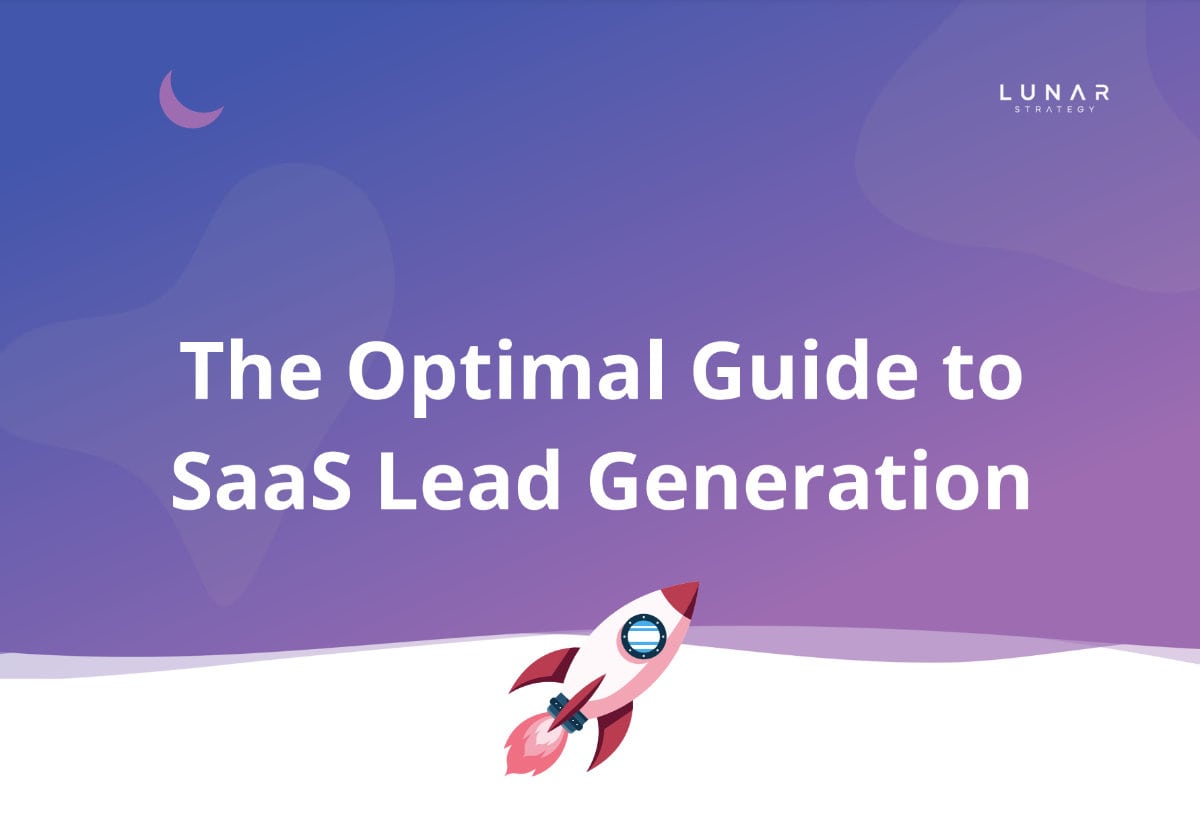
Bottom of the Funnel SEO
The bottom-of-the-funnel prospects are not the same as the top-of-the-funnel prospects. These prospective clients are well-versed in the sorts of solutions that could be able to solve their difficulties. They're also aware of the many tools available to them. Yours should, ideally, be one of them. It's not a guarantee, though, that a prospect will enter your funnel here rather than at the top.
Individuals in this level of the funnel are close to making a purchase.
The material on this page must appeal to and convert these product-savvy visitors. Consider the following examples of several sorts of material to consider:
Comparative Analysis
Content that compares your product to those supplied by your competitors. Make the most of the chance to emphasize your USP and why your solution is a superior option.
Use Cases & Case Studies
Hard evidence of a product's value is one of the most effective ways to persuade a lead. For the bottom of the funnel, articles or blogs explaining how your solution has benefited existing clients are ideal.
Analysis of the Market and Industry Trends
Consumers who are already accustomed to your product will find articles regarding your broader specialization.
They'll want to learn about the industry's present state to select the most excellent product.
News or Product Tutorials
It will move a lead closer to purchase if they can learn how to utilize a solution before purchasing it. It's also a good idea to write an article on a new key or a product update. It's likely to pique the interest of a prospect considering their alternatives.
How do I go about doing SEO for SaaS?
We've dealt with each stage of a SaaS SEO funnel differently up until now. It was critical to do so in order to emphasize the importance of including each step into your plan. Numerous SaaS businesses make the error of focusing exclusively on increasing traffic to the top of the funnel.
However, none of the elements of your SaaS SEO strategy happen in a vacuum. You want to make sure that your efforts at each funnel level are part of a larger strategy. You're in an excellent position to construct one based on the information you've gathered in the preceding phases of our approach.
Your buyer personas will inform you where most of your target audience is most likely to enter the funnel. This displays the regions that require the greatest attention. For each phase of the funnel, you'll also have a list of content themes and keywords. Finally, there's one more item you'll need before you can start planning your approach.
A comprehension of your existing material is the last component. Examine your website & blog to see what topics and keywords you've previously addressed. Don't forget to look at the technical SEO elements as well! Identify pages that can be improved and those that should be replaced. Examine meta descriptions, picture alt-texts, and other information that are often overlooked. Then, when you compare your material to the themes and keywords you identified in your study, you may see any apparent gaps.
With this data and information in hand, you can create an SEO content generation strategy that incorporates the following elements:
- At each level of the funnel, there are keywords to target.
- In addition, at each level, general themes and issues of interest to prospects are discussed.
- The sorts of material you'll need to create for each section.
- Which areas of your funnel should you pay more attention to?
- Content that can be reused or adjusted to match your strategy.
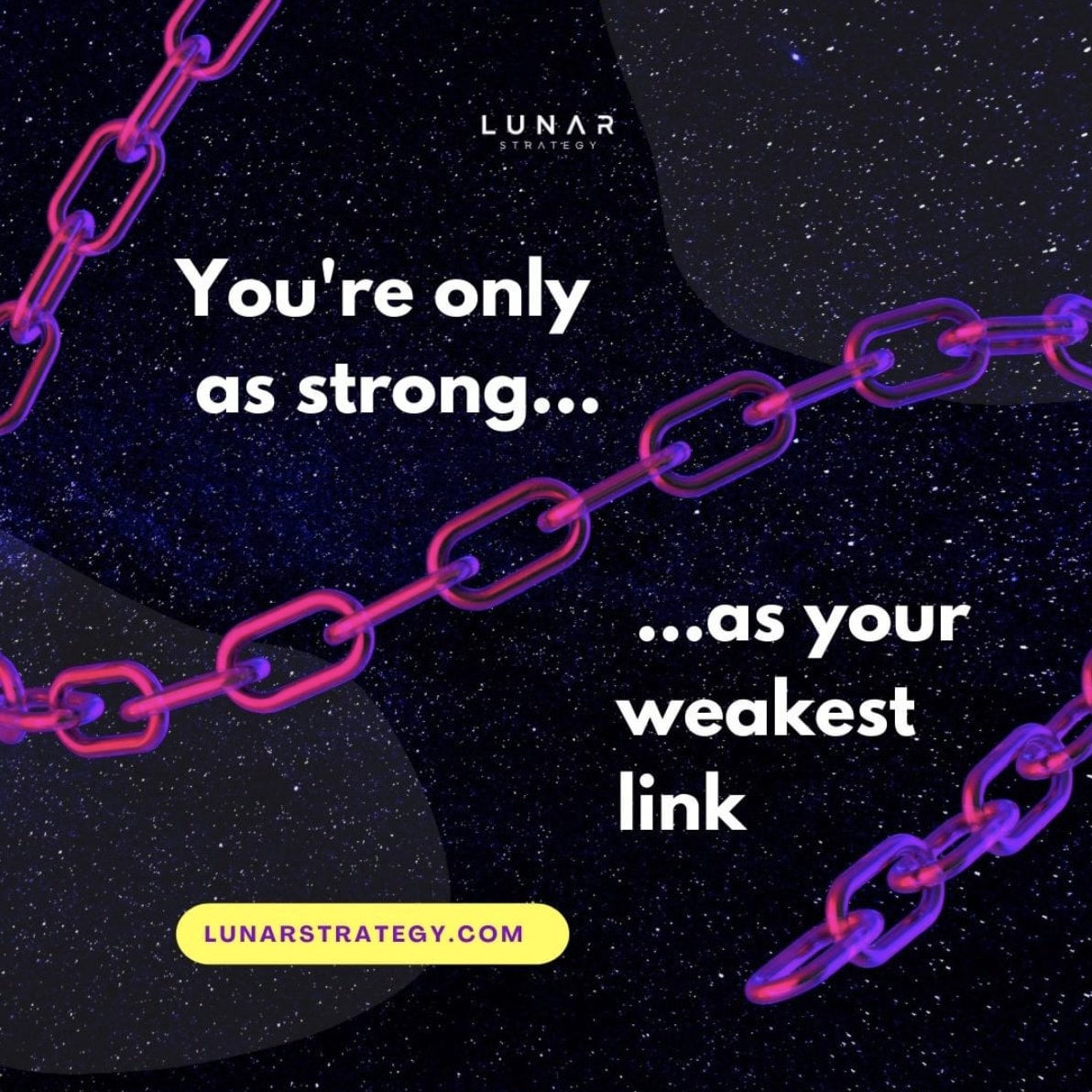
Building links for SaaS SEO
While this post may not cover every element of SaaS SEO, the information you have gathered thus far will prove beneficial.
It should get you started on the path toward creating good SEO content.
The kind of content that you may use to dominate search engine results pages.
You will, however, be unable to increase your rating only using this approach.
When ranking web pages, Google considers a variety of factors. The on-site material is essential, but it doesn't cover everything. Along with content development, link building is an essential component of your approach. Without backlinks, even the highest-quality, best-optimized pages would not rank.
People will inevitably want to link to great material. You can't, however, take the approach of "build it, and they will come." At the very least, you should start with some aggressive outreach. Yes, unfortunately, it does imply requesting some links.
Take, for example, the SaaS company Canva. Building backlinks is a vital part of why they have such a strong SaaS SEO track record. According to a recent study, the brand has approximately 4.24 million of them. Again, this is due to a shared commitment to the high-quality material and targeted outreach.
Canva has SEO experts on staff that are dedicated to increasing traffic. Earning backlinks for the brand's content is part of their job description. They do it by first finding relevant blog posts, articles, and other content in their area. Then they contact the content creators or owners to request that a Canva link be included.
You may be unable to engage your SEO specialist.
On the other hand, this sort of well-thought-out outreach can and should be a part of your SaaS SEO strategy.
Simply follow these examples of recommended practices for SaaS link building:
First, contact your network - Companies or experts with whom you already have a relationship are more likely to wish to collaborate with you. Reaching out to them might yield some low-hanging fruit in terms of link development.
Integrations - Is your product compatible with third-party software? Whether that's the case, ask the companies behind such tools if they'd be willing to connect to your material. After all, you're going to be writing about integrations for your lower-funnel material.
Maintain Relevance - Eventually, you'll broaden your search for backlinks. But don't go for a scattergun strategy. Only links from a domain that is relevant to your material, product, or specialty are important. Ideally, you'd be able to discover sites that cater to all three.

Conclusion
Growing internet traffic is critical for a SaaS company's success. The greater the number of individuals who are aware of your brand and products, the better. That success may be built on the foundation of a solid SEO strategy. If you get your SEO right, your other acquisition attempts will improve as well.
It takes time, energy, and money to get SaaS SEO right, but it's worth it. Always remember that your work should be tailored to your target clients. Knowing who your intended audience is, is the first step. Then, by charting your buyer's journey, you may expand on that.
You can then split your SaaS SEO funnel targeting leads at various phases of the buyer's journey. Find out what your prospects desire and tailor your content to meet their needs. Always keep the searcher's purpose in mind. Every page or article you create should respond to the reader's inquiries or goals.
Backlinks are required for even the most awesome content to rank. As a result, coordinated outreach should be a part of your SaaS SEO strategy. It might be intimidating to approach domains or businesses for links. However, if you've got your content production down pat, it'll be a lot easier than it sounds. Writers, editors, and entrepreneurs all want to connect to high-quality material. It benefits both business and your domains.




























